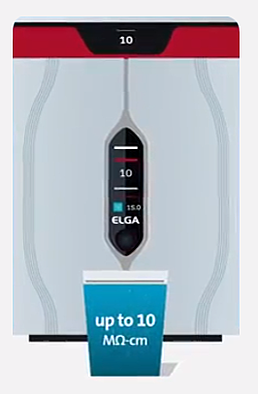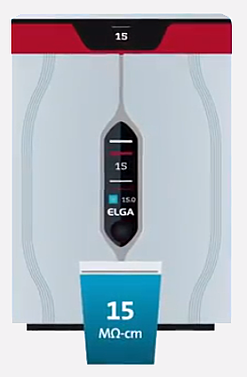Is Your Water Pure Enough?
PURE WATER | TYPE 2+ & 2

With purified water commonly used in a wide variety of scientific and clinical applications, it is vital to ensure the correct level of purity is achieved and maintained.
TYPE 2 WATER
What is Type 2 Water?
The water type defines the water specification regarding the level of contaminants such as organics, ions, pyrogens and bacteria.
Type 2 water is water that has undergone a general level of purification in order to meet lab water purity requirements. Type 2 water has a resistivity level of up to 10 MΩ-cm.
Type 2 water, also known as Pure Water, is typically used for general lab applications that do not require a higher level of water purity (Type 1) including:
- Histology
- Titrations
- Stability Tests
- General Chemistry
- Feed to Type 1 Systems
- Stainless Steel Autoclaves
- Nitrogen-phosphorous (NP) Analyzers, PH solutions
- Biochemical Oxygen Demand/ Chemical Oxygen
TYPE 2+ WATER
How is Type 2+ Water Different to Type 2?
Type 2+ water is used for general laboratory applications which require a higher inorganic purity than Type 2 water. Type 2+ offers a resistivity level of up to 15 MΩ-cm through full recirculation and also includes a UV, which most Type 2 systems do not have.
Type 2+ water is used where the application requires a higher inorganic and ionic purity than standard Type 2 water. Type 2+ may be used for applications such as:
- Electrochemistry
- Dissolution Testing
- Surface Tension Experiments
- Spectrophotometry
- Particle Analyzers
Type 2 and 2+ water undergoes a general level of lab water purification to remove contaminants and impurities such as:
Organics (e.g. Pesticides), Inorganics ( e.g. Iron, Lead, Copper), Bacteria
(<5 CFU/ml), Particulates (>99.9% Removal of up to 0.2µm)
Is Your Water Pure Enough?
It is important that the correct type of water is used for the right purpose within the laboratory environment. Ensuring that water meets the required standard is also important. Water that does not meet the specified criteria for Pure water can adversely affect your results.
Commercially available bottled Pure water is often seen as a reliable and convenient option. But it has several drawbacks. Once the bottle is opened, the water will begin to degrade and no longer meet the required standard for the application. What’s more, if large quantities of bottled Pure water are used, it can become expensive and generate large quantities of plastic waste each year. You can learn more about these and other challenges of bottled pure water over on our blog.
An in-house purification system can often prove to be the best investment, especially over the long term. Our flexible Purelab Chorus range can provide your lab with a reliable, easy-to-use and cost-effective source of Pure and Ultra Pure water directly from a potable water supply.




